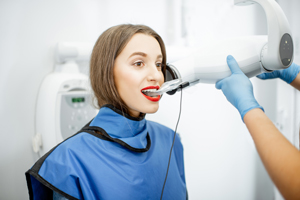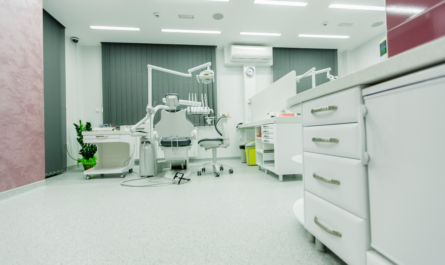
By Dr. Katherine Schrubbe, RDH, BS, MEd, PhD.
Let patients know what and why you do the things you do to keep them healthy and safe.
While providers must take care to protect the dental team from illness and injury, they mustn’t lose sight of the health and safety of their patients. Safety and infection control strategies are critical to providing safe dental treatment to patients. The Occupational Safety and Health Administration (OSHA) sets standards for dental employers to ensure all team members have a safe workplace.1 The Centers for Disease Control and Prevention (CDC) provides guidance and protocols for infection prevention of the dental team, and also focus on patient health and safety.2,3 The CDC’s mission is to protect America from health, safety and security threats, both foreign and in the U.S. Whether diseases start at home or abroad, are chronic or acute, curable or preventable, or the result of human error or deliberate attack, CDC fights disease and supports communities and citizens to do the same.4 Let’s look at the top four actions dental practices should take to remain focused on patient safety.
Hand hygiene
Hands are the most common mode of pathogen transmission. On average, however, healthcare providers clean their hands less than half of the times they should, according to the CDC.5 Efforts around the globe have been focused on the benefits of clean hands in healthcare settings; yet, the World Health Organization (WHO) states that even in resource-rich settings, hand hygiene compliance can be as low as zero percent, with compliance levels most frequently well below 40 percent.6 Hand hygiene is a must-do practice for the health of patients, as well as dental team members, and should be completed in the presence of the patient. With access to the Internet and a wide variety of resources, patients are very savvy. The CDC has resources for patients and instruct them to speak up:
“Don’t be afraid to use your voice: it’s okay to ask your healthcare provider questions, such as:
- I didn’t see you clean your hands when you came in; would you mind cleaning them again before you examine me?
- I’m worried about germs spreading. Will you please clean your hands once more before you start my treatment?”5
Take the time and do the right thing consistently and effectively regarding hand hygiene to protect patients, as well as team members, and reduce the risk of cross-contamination and spread of potential pathogens.
Thyroid collar use
 Why do I have to wear this collar around my neck for x-rays? This question is commonly asked by patients. Dental professionals should let patients know before they ask that the collar is being used to protect their thyroid gland. According to the American Thyroid Association (ATA), it was estimated that in 2016 approximately 64,000 new patients in the United States would be diagnosed with thyroid cancer. In 2013, the last year for which statistics are available, over 630,000 patients were living with thyroid cancer in the U.S.7
Why do I have to wear this collar around my neck for x-rays? This question is commonly asked by patients. Dental professionals should let patients know before they ask that the collar is being used to protect their thyroid gland. According to the American Thyroid Association (ATA), it was estimated that in 2016 approximately 64,000 new patients in the United States would be diagnosed with thyroid cancer. In 2013, the last year for which statistics are available, over 630,000 patients were living with thyroid cancer in the U.S.7
In 2012, the ATA released a Policy Statement on Minimizing Radiation Exposure from Medical, Dental Diagnostics, noting that increased radiation exposure among both children and adults is of primary concern because the thyroid gland is among the most susceptible sites of radiation-induced cancer.8 In this policy statement, one of the key recommendations is for thyroid-protective collars to be used for all dental x-rays when they do not interfere with the examination. The American Dental Association also recommends the use of a thyroid collar for dental x-rays.9
Dental professionals should explain to patients that dental providers are a member of their overall healthcare team, and are committed to promoting and protecting general health, as well as oral health. It is important to protect the thyroid gland, which produces very important hormones that help the body use energy, stay warm and keep the brain, heart, muscles and other organs working as they should.8 For dental healthcare providers, the promotion and protection of systemic health is key to good oral health, and patients must be educated and informed about why providers do what they do.
Implementing patient protective eyewear
The CDC recommends eye protection for all dental patients.10 Many patients decline or refuse to wear protective glasses or goggles during treatment, so this is the time to share the rationale for compliance to the request. Dental treatment in general creates spray and spatter, and the use of numerous instruments throughout treatment can also pose ocular risk. 2,3
On July 8, 2013, Jennifer Morrone, went to her dentist; after the dentist gave her an injection, he passed the syringe over her face without recapping the needle first and dropped the needle in her eye. Neither the dentist nor a member of his team had offered Morrone a pair of safety glasses. The infection caused her retina to become completely detached. She underwent multiple surgeries, but ultimately the doctors had to remove her eye lens and she lost her vision.11 Other cases of ocular injuries have also been documented.
A case reported in 2007 relays the story of a female patient with contact lenses who was not wearing safety glasses. During the treatment, a stream of water was directed from the handpiece into her right eye. Because of subsequent eye pain, the patient consulted several ophthalmologists who discovered abrasive lesions of the cornea and inflammation. Despite numerous treatments, the patient’s visual acuity gradually declined. A microbiological examination nearly two months later revealed amoebae (Acanthamoeba spp) in corneal samples, which caused a serious infection in the patient’s eye, leaving symptoms that persisted for years and later led to a lawsuit against the dentist.12
It is critically important to have standing policies for patient safety in the practice. The dental team must take the time to educate and explain to patients the rationale for wearing protective eyewear during dental treatment. When patients understand, they are more likely to comply.
Environmental asepsis
Clinical contact surfaces are easily contaminated with aerosols and spatter that may contain blood, saliva or other potentially infectious materials (OPIM) during dental treatment, and they must be cleaned and disinfected between patients. 2,3 Sometimes patients may notice a scent from the disinfectant. This is a good time for the dental team to inform patients that infection prevention is taken very seriously at the practice, and that after each patient, the operatory is cleaned and disinfected with an intermediate-level disinfectant to eliminate pathogens and reduce the risk of cross-contamination between patients.
The CDC is very clear on the protocols for environmental asepsis, which include not only cleaning and disinfection, but the use of surface barriers.3 Most dental practices implement a combination of both. Barriers are utilized to protect clinical contact surfaces that are difficult to clean and are an FDA-cleared medical device; they must be changed between patients. According to the CDC, dental practices must utilize an EPA-registered disinfectant with label claims for healthcare settings.3 Intermediate-level disinfectants have a TB kill claim and are utilized in dentistry because of the high probability of blood and body fluids on clinical contact surfaces.2 When choosing a disinfectant, one must follow the instructions for use (IFU) and should consider the stated TB kill time; the shorter the kill time, the quicker the operatory turnover and the quicker the next patient can be seated. Dental practitioners should inform patients about the important role surface disinfectants and barriers play in protecting them from pathogens.
Many infection control protocols performed in the dental setting have been developed and put in place to promote patient health and safety. Just as patients are educated on oral hygiene, treatment and post-operative instructions, certain procedures for infection prevention that are in the best interest of patients are more easily accepted when rationale and education are provided. Although dental providers can be extremely busy delivering direct care, time should also be permitted for educating patients on why they do what they do to promote their health and safety.
References:
- U.S. Department of Labor. Occupational Safety and Health Administration. About OSHA. Available at https://www.osha.gov/aboutosha. Accessed November 18, 2019.
- Centers for Disease Control and Prevention. Guidelines for infection control in dental health-care settings—2003. MMWR. 2003; 52:1–61.
- Centers for Disease Control and Prevention. Summary of Infection Prevention Practices in Dental Settings: Basic Expectations for Safe Care. Atlanta, GA: US Department of Health and Human Services, Centers for Disease Control and Prevention, National Center for Chronic Disease Prevention and Health Promotion, Division of Oral Health, March 2016.
- Centers for Disease Control and Prevention. Mission, Role and Pledge. Available at https://www.cdc.gov/about/organization/mission.htm. Accessed November 18, 2019.
- Centers for Disease Control and Prevention. Hand Hygiene in Healthcare Settings. Available at https://www.cdc.gov/handhygiene/patients/index.html. Accessed November 18, 2019.
- World Health Organization. How significant is the problem of infections in health care across the world? Available at https://www.who.int/features/qa/hand-hygiene/en/. Accessed November 18, 2019.
- American Thyroid Association. Available at https://www.thyroid.org/anaplastic-thyroid-cancer/. Accessed November 13, 2019.
- American Thyroid Association. Available at https://www.thyroid.org/american-thyroid-association-ata-issues-policy-statement-on-minimizing-radiation-exposure-from-medical-dental-diagnostics/. Accessed November 13, 2019.
- American Dental Association. Dental X-rays. Available at https://www.mouthhealthy.org/en/az-topics/x/x-rays. Accessed November 13, 2019.
- Guidelines for Infection Control in Dental Health-Care Settings — 2003. Centers for Disease Control and Prevention. December 19, 2003 / 52(RR17);1-61. Available at https://www.cdc.gov/mmwr/preview/mmwrhtml/rr5217a1.htm. Accessed November 13, 2019.
- Kelsch N. Jenn’s vision: A true lesson in best practices Dentistry IQ; August 1, 2014. Available at http://www.dentistryiq.com/articles/2014/08/jenn-s-vision-a-true-lesson-in-best-practices.html. Accessed November 13, 2019.
- Barbeau J. Lawsuit against a dentist related to serious ocular infection possibly linked to water from a dental handpiece. J Can Dent Assoc. 2007; 73:618-22. Available at http://www.cda-adc.ca/jcda/vol-73/issue-7/618.pdf. November 13, 2019.
Editor’s note: Dr. Katherine Schrubbe, RDH, BS, M.Ed, PhD, is an independent compliance consultant with expertise in OSHA, dental infection control, quality assurance and risk management. She is an invited speaker for continuing education and training programs for local and national dental organizations, schools of dentistry and private dental groups. She has held positions in corporate as well as academic dentistry and continues to contribute to the scientific literature. Dr. Schrubbe can be reached at [email protected].




